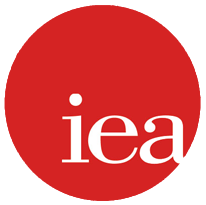Plain packaging – what happened next?
SUGGESTED



A few days before the policy went into full effect, activist-researchers announced that plain packaging had the effect of making some smokers believe that their cigarettes tasted worse (a hypothesis that was eagerly pursued by those who hope the policy will be extended to ‘junk food’), but empirical research about the revealed preferences of the Australian public has taken longer to appear.
Two years on, we now have enough data on tobacco sales and smoking prevalence to say with confidence that plain packaging has had no positive impact.
Tobacco sales (legal)
Australian Bureau of Statistics’ data show that there has been a secular decline in the chain volume of tobacco sales since the 1970s, but this began to go into reverse in the first year of plain packaging (see graph below). In three out four quarters in 2013, sales were higher than they had been in the last quarter before plain packaging was implemented. This unusual rise in tobacco sales only came to end in December 2013 when a large tax rise on tobacco (of 12.5 per cent) was implemented, thereby leading to a fall in the following quarter.

A recent study published in the Australian National University’s journal Agenda examined the government’s official sales figures before and after the introduction of plain packaging and, despite using several different statistical tests, found no evidence that the policy had any positive effect. The authors concluded:
‘Ronald Coase famously argued that if you tortured the data long enough they would confess. In this paper we have tortured the data, but there has been no confession. At best, we can determine the plain packaging policy introduced in December 2012 has not reduced household expenditure of tobacco once we control for price effects, or the long-term decline of tobacco expenditure, or even the latent attributes of the data.
To the contrary, we are able to find a suggestion that household expenditure of tobacco has, ceteris paribus, increased. In our forecasting exercise the actual data come close to breaking through the 80 per cent confidence interval. While we do not want to over-emphasise these results, we do conclude that any evidence to suggest that the plain packaging policy has reduced household expenditure on tobacco is simply lacking.
Smoking prevalence
Official data from the Australian Institute of Health and Welfare suggest that the secular decline in smoking amongst those aged 14 years and older has continued at the same rate in recent years, but underage smoking (12 to 17 year olds) may have risen since 2010 (see graphs below).


The AIHW data is limited by a relatively small sample (for underage smokers) and a triannual survey period that makes it difficult to assess the impact of plain packaging specifically. Some proponents of plain packaging have portrayed the decline in adult smoking between 2010 and 2013 as evidence of the policy’s ‘success’. In the UK, ASH has even claimed that there was a “huge drop in Australian smoking rates attributed to standardised packs”. This is a gross misrepresentation of the data. For most of the period between 2010 and 2013, plain packaging had not even been introduced and there was, in any case, nothing exceptional about the decline in smoking prevalence during these years. A spokesman for AIHW responded by saying: ‘Plain packaging came in between 2010 and 2013, in what was a fairly strong drop in the daily smoking rate, but it would be a stretch to say this data shows that was a key factor.’
Two studies by Dr Ashok Kaul and Dr Michael Wolf examined more detailed youth smoking data and found no impact from plain packaging. More recent evidence from Australia’s most heavily populated state New South Wales shows no decline in adult smoking rates since 2011 (with some suggestion of a rise) and the Health Minister of South Australia said in May that there had been an increase in smoking rates in his state. At best, it seems that the secular decline in smoking rates has continued at is usual steady pace, just as it has in comparable countries that have not experimented with plain packaging.
Tobacco sales (illegal)
A 2013 study by the global accounting firm KPMG reported a 154 per cent rise in the sale of illicit, branded cigarettes in Australia, including Manchester, a brand that is produced legally in the United Arab Emirates before being smuggled into the country by boat. This brand has never been legal in Australia. It is unregulated and its packaging contains no health warnings. Despite this, Manchester now makes up 1.2 per cent of the entire market, in terms of consumption. KPMG found that illicit tobacco made up 13.5 per cent of the Australian tobacco market and a recent follow up study found that this has since risen to 14.3 per cent, representing $1.2 billion of tobacco duty forgone by the government.
Official Australian government figures show that the number of seizures of illicit tobacco rose by 60 per cent between 2011/12 and 2012/13, with 183 tonnes of tobacco and 200 million cigarettes detected. Australian newspapers report that illicit tobacco is widely available both on the black market and in retail shops. In January 2014, Australian authorities seized 71 tonnes of illegal tobacco and 80 million cigarettes in a single shipment – the largest seizure in the country’s history. Two months later, more than 35,000 tobacco plants were seized from a crime syndicate in Melbourne – the largest seizure of homegrown tobacco in the country’s history.
There appears to be significant latent demand for conventional cigarette packets in Australia which can only be met by the black market. In June 2014, the Sun newspaper sent journalists to Indonesia to secretly film a meeting with a major cigarette counterfeiter. The recorded conversation left little doubt that illicit traders see plain packaging as a boon:
‘Indonesian forger Faus Firdaus said his profits would soar when he no longer has to copy the complex packaging and embossing on popular makes like Marlboro and Regal.
He even punched the air as he mocked PM David Cameron, cheering: “Plain packaging… I support the UK government! …We will make more money. We can make it cheaper but sell for the same price. It’s good for you, good for me.”
He added that plain packaging would also lower the profile of forgeries, making them easier to ship without suspicion.’
International trade
The Indonesian government has already expressed interest in putting alcohol in plain packaging. As an Islamic country, Indonesia has religious reasons for clamping down on alcohol, but its government has also intimated that the policy would be “retaliation” for Australia bringing in plain packaging for tobacco. This, of course, is exactly the kind of tit-for-tat war that trade agreements are designed to prevent and it one of the reasons why intellectual property rules and the World Trade Organisation (WTO) exist.
The WTO is currently handling a complaint lodged against Australia by 36 countries in an effort to overturn the legislation on grounds of international trade and because ‘it is obvious that it is failing to reduce smoking.’
Conclusion
The policy of plain packaging is based on the belief that people start smoking as a direct result of seeing logos and colour schemes on cigarette packs. If that belief is ill-founded (as any smoker will tell you it is) then it is no surprise that plain packaging has failed to have even a slight impact on smoking rates.
Plain packaging is one of a number of extreme anti-market measures proposed by the ‘public health’ lobby to hand the control of levers of competition to the state. The fact that plain packaging, like minimum pricing, is at the centre of major trade disputes is an indication of its threat to the workings of the free market.
A market in which the government dictates what a product should look like, how much it should cost and what size it can be is barely a market at all. Smokers and the tobacco industry are often used as guinea pigs for draconian new legislation, but with the clamour for plain packaging to be extended to food and alcohol growing louder, its conspicuous failure in the only country to have tried it needs to be understood.
You can download the IEA report Plain Packaging: Questions That Need Answering here.




